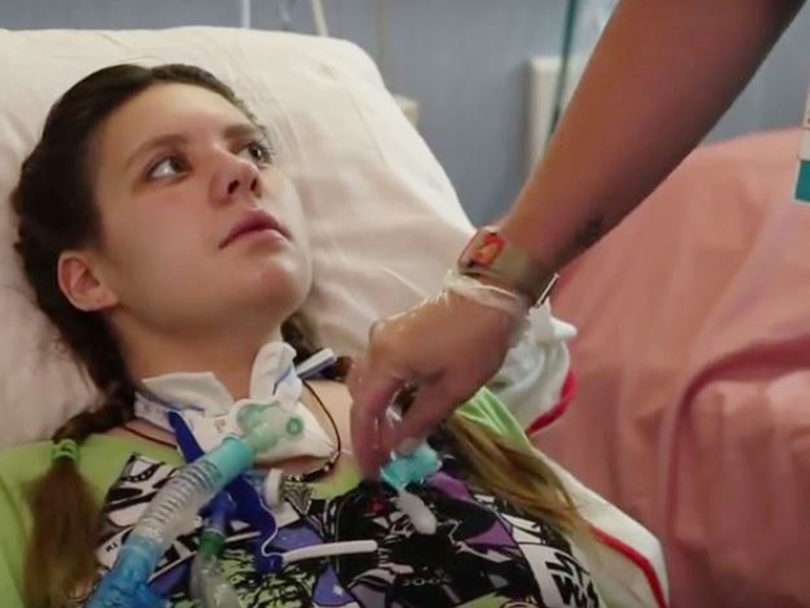Patients who are on ventilators are basically prisoners of the machine; without it, they can’t breathe on their own. “As you can imagine, being on a ventilator, having a machine essentially breathe for you, your quality of life is limited,” says Omas Orsini, president/CEO of Lake Taylor Transitional Care Hospital, a long-term, acute-care hospital and nursing facility in Norfolk, Va.
The hospital saw that it could fill a need, deciding to make itself a provider of choice for ventilator-dependent patients. In doing so, providers have mastered the use of the Passy-Muir Valve — a medical device that helps mechanically-ventilated patients and those who have tracheostomies talk, swallow and improve pulmonary functioning.
The hospital’s “teamwork, education and utilization” of the valve recently earned it the designation as a Passy-Muir Center of Excellence, making it one of only 15 facilities in the world to be named so. Lake Taylor has previously been recognized for its ventilator-weaning program.
“It’s a team effort, providing a service and an outcome at Lake Taylor that [patients] maybe couldn’t get somewhere else,” Orsini says. “It’s a tribute to the staff at Lake Taylor who worked towards this recognition.”
Since patients stay longer at Lake Taylor than in an ordinary acute- care hospital, the staff has time to work closely with individuals to wean them off ventilators. A ventilator is a machine that physically moves air in and out of people’s lungs when they can’t breathe on their own.
“Slowly, we try to get them off, whether it’s for one minute, two minutes, five minutes, 10 minutes,” Orsini says. “We build up to what they can tolerate.”
Even if patients can’t breathe without a ventilator, the Passy-Muir Valve helps patients talk, swallow and chew — things ventilator-dependent patients and those who have had tracheostomies can’t otherwise do. A tracheostomy is a temporary or permanent medical procedure where a surgeon cuts an opening just below a patient’s vocal cords to insert a tube into his or her windpipe. is allows air to enter the lungs without going through the patient’s nose, mouth or throat. A doctor performs a tracheostomy when conditions block the upper airways, or when patients will require ventilators for more than a couple of weeks.
The Passy-Muir Valve is placed on the hub of the tracheostomy tube or along the ventilator, redirecting air flow through the vocal folds, mouth and nose and therefore enabling voice and improved communication.
The valve was invented by the late David A. Muir, who was diagnosed with Duchenne’s Disease when he was only 5 years old. is progressive muscular dystrophy eventually took away his speech.
“This greatly frustrated him, so he began to study the equipment he was hooked up to,” Patricia Passy, who later became Muir’s partner, told the Los Angeles Times in a 1990 interview. “From that, he designed a prototype for the valve that would allow him to speak.”
Passy and Muir went into business together in 1985, at a time when there was virtually no education offered on communication options for tracheostomized and ventilator- dependent patients. While Muir originally designed the valve for speech, many other benefits soon became apparent, including weaning patients off ventilators, improving swallowing function, controlling infection and improving the patient’s sense of smell.
During the first five years of their partnership, Muir and Passy brought the valve to more than 100,000 ventilator patients in hospitals across the United States. In 1990, the 28-year-old Muir, who was a quadriplegic, fell out of his wheelchair, knocking out his oxygen tube. He slipped into a coma and died, leaving behind the legacy of a medical device that still helps people around the world.
Lake Taylor Hospital strives to give patients something they can’t get elsewhere, Orsini says. Its reputation has drawn ventilator-dependent patients from around the region, from pediatrics to geriatrics. In addition to the Passy-Muir apparatus, Lake Taylor provides ventilator patients with adaptive laptops that work in conjunction with cursors attached to patients’ hands, lips or foreheads. They can surf the Internet, send emails and watch movies.
“They can have a quality of life that they couldn’t maybe otherwise,” Orsini says.
Orsini says he hopes that being named a Passy-Muir Center of Excellence will continue to advance Lake Taylor.
“Good things attract good people,” he says. “Being part of a center of excellence, potential employees or respiratory therapists hopefully would want to come here to work.”
Pictured above:
Ariel Mendez was a 22-year-old Navy sonar technician. In Sept. 2016 she started having weakness in her arms and legs and ended up diagnosed with Guillain-Barre syndrome, a rare disorder in which the body’s immune system attacks the nerves. After therapy at Lake Taylor Transitional Hospital using the Passy-Muir Valve, Mendez was able to regain her speech and eventually breathe and eat on her own. “The worst feeling ever — just laying in the bed, not able to move, not able to speak. Now that I can, I’m so grateful.”







